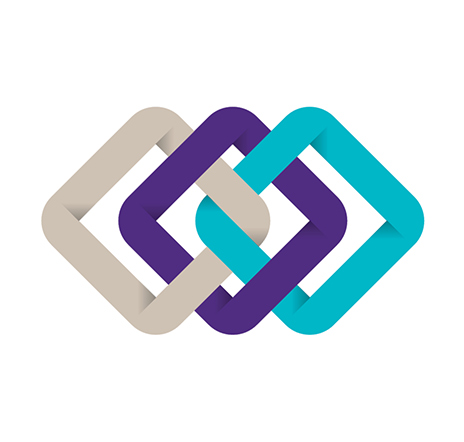-
Accounting Advisory
Our accounting advisory team help businesses meet their complex financial reporting requirements. The team can support in applying new financial reporting standards, IFRS/ US GAAP conversions, financial statement preparation, consolidation and more.
-
Payroll
Our team can handle your payroll processing needs to help you reduce cost and saves time so that you can focus on your core competencies
-
Managed accounting and bookkeeping
Outsourcing the financial reporting function is a growing trend among middle market and startup companies, as it provides a cost-effective way to improve the finance and accounting function. Our team can help with financial statement preparation, consolidation and technical on-call advisory.
-
Accounting Advisory
Our team helps companies keep up with changes to international and domestic financial reporting standards so that they have the right accounting policies and operating models to prevent unexpected surprises.
-
Crypto Accounting Advisory Service
Our team can help you explore appropriate accounting treatment for accounting for holdings in cryptocurrencies, issuance of cryptocurrencies and other crypto/blockchain related accounting issues.
-
ESG Reporting and Accounting
As part of our ESG and Sustainability Services, our team will work with you on various aspects of ESG accounting and ESG reporting so that your business can be pursue a sustainable future.
-
Expected Credit Loss
Our team of ECL modelling specialists combine help clients implement provisioning methodology and processes which are right for them.
-
Finance Transformation
Our Finance Transformation services are designed to challenge the status quo and enable your finance team to play a more strategic role in the organisation.
-
Managed Accounting and Bookkeeping Services
Outsourcing the financial reporting function is a growing trend among middle market and startup companies, as it provides a cost-effective way to improve the finance and accounting function. Our team can help with financial statement preparation, consolidation and technical on-call advisory.
-
Business Tax Advisory
Our business tax team can help you navigate the international tax landscape, grow through mergers and acquisitions, or plan an exit strategy.
-
Corporate Finance
Our corporate finance team helps companies with capital raising, mergers and acquisitions, private equity, strategic joint ventures, special situations and more.
-
Financial Due Diligence
From exploring the strategic options available to businesses and shareholders through to advising and project managing the chosen solution, our team provide a truly integrated offering
-
Valuations
Our valuation specialists blend technical expertise with a pragmatic outlook to deliver support in financial reporting, transactions, restructuring, and disputes.

-
Sustainability with the ARC framework
Backed by the CTC Grant, businesses can tap on the ARC Framework to gain access to sustainability internally, transform business processes, redefine job roles for workers, and enhance productivity. Companies can leverage this grant to drive workforce and enterprise transformation.

-
Business Tax Advisory
Our business tax team can help you navigate the international tax landscape, grow through mergers and acquisitions, or plan an exit strategy.
-
Corporate Tax Compliance
Our corporate tax teams prepare corporate tax files and ruling requests, support you with deferrals, accounting procedures and realise tax benefits.
-
Tax Governance
Our Tax Governance Services are designed to assist organisations in establishing effective tax governance practices, enabling them to navigate the intricate tax environment with confidence.
-
Goods and Services Tax
Our GST team supports organisations throughout the entire business life-cycle. We can help with GST registration, compliance, risk management, scheme renewals, transaction advisory and more.
-
Transfer Pricing
Our Transfer Pricing team advises clients on their transfer pricing matters on and end-to-end basis right from the designing of policies, to assistance with annual compliance and assistance with defense against the claims of competing tax authorities.
-
Employer Solutions
Our Employer Solutions team helps businesses remain compliant in Singapore as well as globally as a result of their employees' movements. From running local payroll, to implementing a global equity reward scheme or even advising on the structure of employees’ cross-border travel.
-
Private Client Services
Our private client services team provides a comprehensive cross section of advisory services to high net worth individuals and corporate executives, allowing such individuals to concentrate on their business interests.
-
Welfare and benefits
We believe that a thriving team is one where each individual feels valued, fulfilled, and empowered to achieve their best. Our welfare and benefits aim to care for your wellbeing both professionally and personally.
-
Career development
We want to help our people learn and grow in the right direction. We seek to provide each individual with the right opportunities and support to enable them to achieve their best.
Attributing Benefit to Periods of Service (IAS 19 Employee Benefits)
The IFRS Interpretations Committee (“the Committee”) received a submission about the periods of service to which an entity attributes benefit for a particular defined benefit plan, but decided not to add a standard-setting project to the work plan. Instead, the Committee decided to finalise an agenda decision that also explains how the applicable principles and requirements in IFRS Standards apply to the question.
Under the terms of the plan described in submission, employees are entitled to a lump sum benefit payment when they reach a specified retirement age provided they are employed by the entity when they reach that retirement age. The amount of the retirement benefit to which an employee is entitled depends on the length of employee service with the entity before the retirement age and is capped at a specified number of consecutive years of service.
IAS 19 requires an entity to attribute benefit to periods of service under the plan’s benefit formula from the date when employee service first leads to benefits under the plan until the date when further employee service will lead to no material amount of further benefits under the plan. An entity’s obligation increases until the date when further service by the employee will lead to no material amount of further benefits under the plan.
The Committee concluded that the principles and requirements in IFRS Standards provide an adequate basis for an entity to determine the periods of service to which retirement benefit is attributed in the fact pattern described in the request. Consequently, the Committee decided not to add a standard-setting project to the work plan.
Hedging Variability in Cash Flows due to Real Interest Rates (IFRS 9 Financial Instruments)
The objective of hedge accounting is to represent, in the financial statements, the effect of an entity’s risk management activities that use financial instruments to manage exposures arising from risks that could affect profit or loss.
More specifically, the request received described a fact pattern in which an entity with a floating rate instrument referenced to an interest rate benchmark, such as the London Interbank Offered Rate (LIBOR), enters an inflation swap which swaps the variable interest cash flows of the floating rate instrument for variable cash flows based on an inflation index. The request asked whether the entity can designate the swap in a cash flow hedging relationship to hedge changes in the variable interest payments for changes in the real interest rate.
As IFRS has a rebuttable presumption that unless inflation risk is contractually specified, it is not separately identifiable and reliably measurable and hence cannot be designated as a risk component of a financial instrument, the Committee focused on whether a non-contractually specified real interest rate risk component is separately identifiable and reliably measurable in the context of the proposed cash flow hedging relationship.
The Committee noted that for the market structure to support the eligibility of that risk component in the proposed cash flow hedging relationship, the real interest rate must represent an identifiable pricing element in setting the floating benchmark interest rate, thereby creating separately identifiable and reliably measurable cash flow variability in the floating rate instrument.
As the rebuttable presumption in IFRS 9 applies to both fair value hedges and cash flow hedges, the Committee therefore concluded that nominal rates generally do not change as a direct result of changes in real interest rates.
Consequently, the real interest rate risk component in the proposed cash flow hedging relationship does not meet the requirements in IFRS 9 to be designated as an eligible hedged item.
Costs Necessary to Sell Inventories (IAS 2 Inventories)
IAS 2 requires an entity to estimate the costs necessary to make the sale. This requirement does not allow an entity to limit such costs to only those that are incremental, thereby potentially excluding costs the entity must incur to sell its inventories but that are not incremental to a particular sale.
The Committee concluded that when determining the net realisable value of inventories, an entity is required to include costs necessary to make the sale in the ordinary course of business. An entity is required to use its judgement to determine which costs are necessary to make the sale considering its specific facts and circumstances, including the nature of the inventories.
Preparation of Financial Statements when an Entity is No Longer a Going Concern (IAS 10 Events after the Reporting Period)
The Committee received a request on the accounting which should be applied by an entity that is no longer a going concern. The request asked whether the entity:
- can prepare financial statements for prior period on a going concern basis if it was a going concern for those periods and has not previously prepared financial statements for those periods
- restates comparative information to reflect the basis of accounting used in preparing the current period’s financial statements if it had previously issued financial statements for the comparative period on a going concern basis
The Committee concluded an entity which is no longer a going concern cannot prepare financial statements (including those for prior periods that have not yet been authorised for issue) on a going concern basis.
Non-refundable Value Added Tax on Lease Payments (IFRS 16 Leases)
During the March 2021 meeting, it was concluded that the non-refundable value-added tax (VAT) should be excluded from the measurement of the lease liability and suggested not explaining the accounting treatment lessees apply to it because its impact is not material nor widespread.
Most of the Committee members agreed with the accounting conclusion but some of them were not convinced that the matter is not material nor widespread based on the limited outreach performed by the staff.
Outreach conducted by the Committee and comment letters on the Committee’s tentative agenda decision provided limited evidence:
- that non-refundable VAT on lease payments is material to affected lessees; and
- of diversity in the way lessees in similar circumstances account for non-refundable VAT on lease payments.
Join our mailing list to keep updated on changes in the financial reporting landscape






